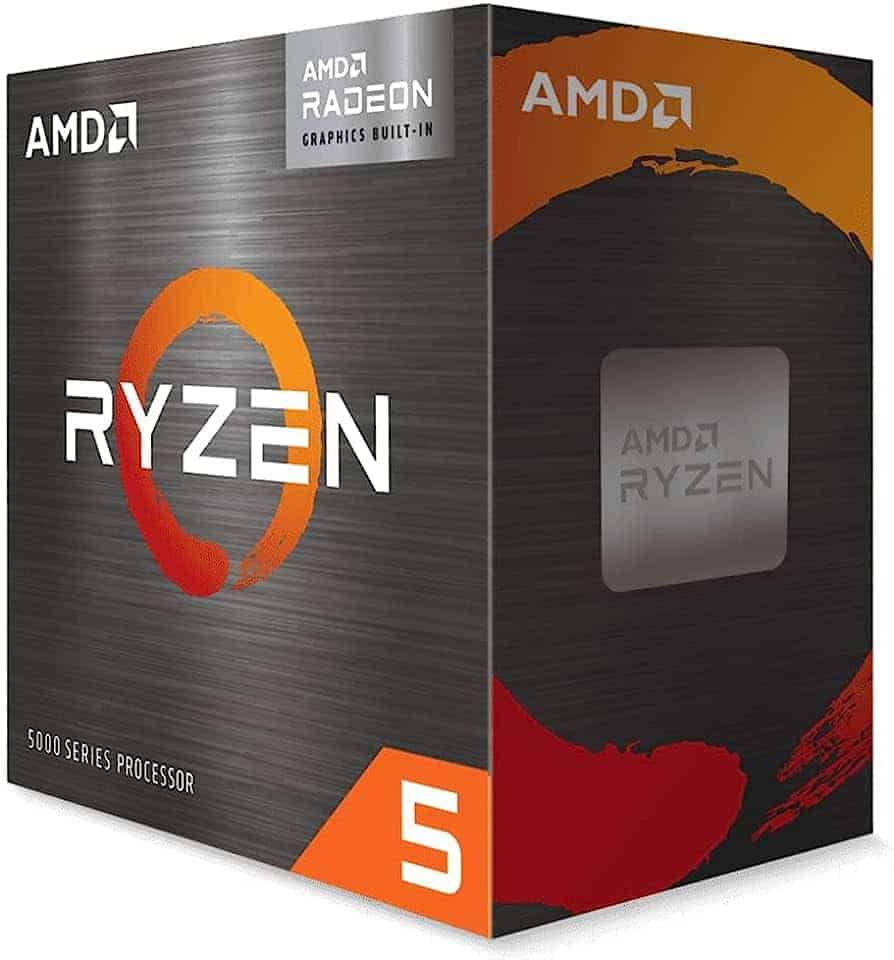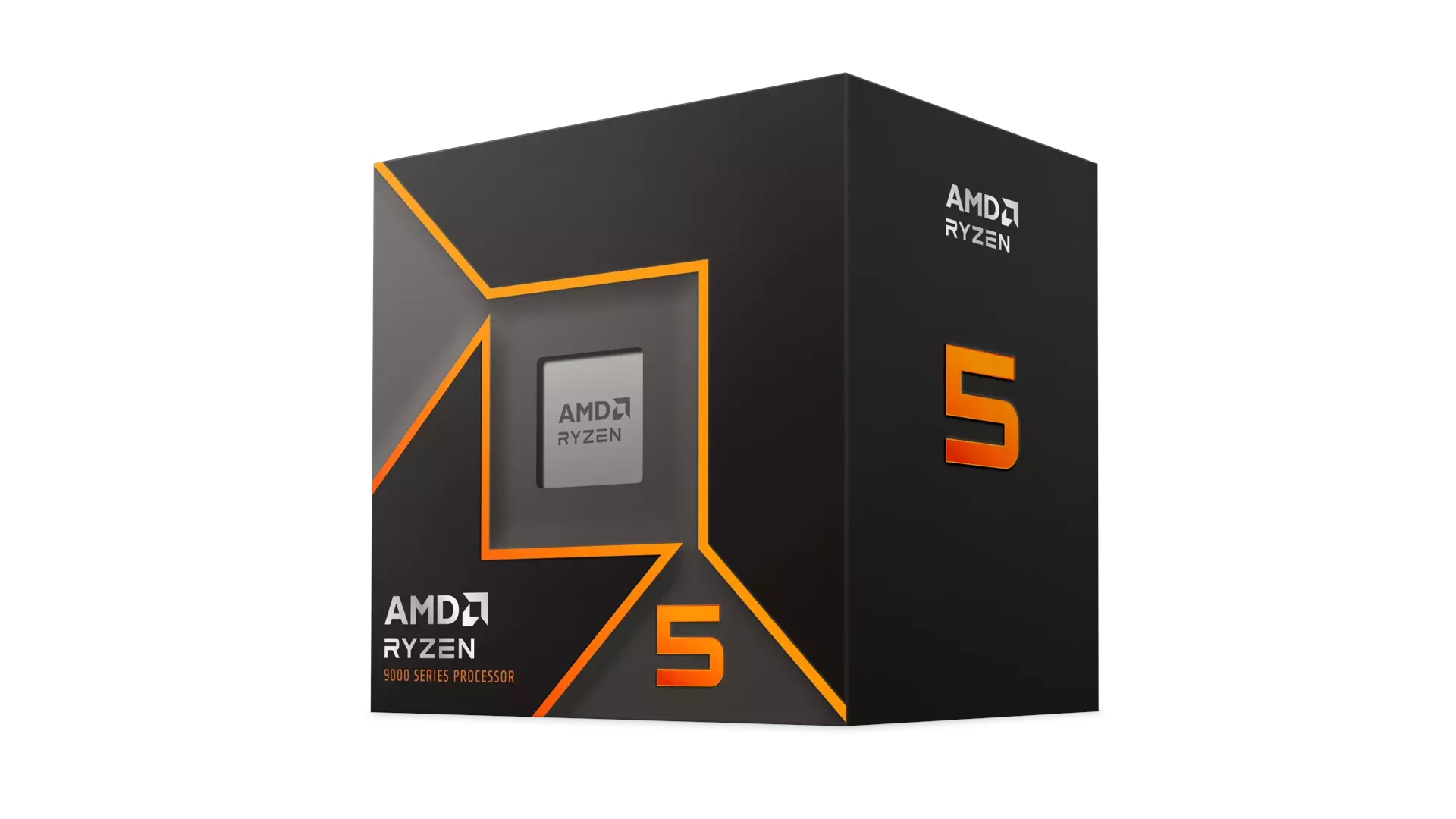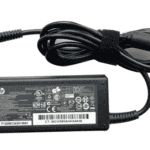Looking for the best CPU deal in early 2025? AMD’s Ryzen 5 processors have become an incredible value proposition for budget-conscious builders. With models like the 5500 now available for as low as $76, these chips deliver impressive performance without emptying your wallet. The AMD Ryzen 5 series offers the best price-to-performance ratio in today’s CPU market, making it the ideal choice for gamers and casual users on a tight budget.
The latest price drops have made these processors even more attractive. The Ryzen 5 9600X, now $40 cheaper than at launch, has become a strong contender in the sub-$250 category. Even older models like the 5600G provide excellent integrated graphics performance for those who want to skip a dedicated GPU. This makes AMD’s lineup particularly appealing for first-time PC builders.
What makes the Ryzen 5 special isn’t just its affordability. These CPUs deliver solid 1080p gaming performance and handle everyday productivity tasks with ease. The 7400F, though less common in Western markets, represents AMD’s continued commitment to the budget segment. For anyone building a new system or upgrading an older one, the Ryzen 5 lineup deserves serious consideration.
AMD Ryzen 5 Breakdown: The Best Values

If you’re building a PC in 2025 and looking for the sweet spot between performance and price, one CPU family stands out: AMD’s Ryzen 5 series. These 6-core, 12-thread chips have quietly become the best bang-for-your-buck processors on the market. Whether you’re gaming, streaming, or doing some light content creation, Ryzen 5 CPUs hit that perfect middle ground without torching your budget—or your power supply.
Here’s a breakdown of the best Ryzen 5 chips available right now, ranked by overall value and performance.
1. AMD Ryzen 5 7600X
- Core Count: 6
- Base Clock: 4.7 GHz
- Boost Clock: 5.3 GHz
- Architecture: Zen 4
- TDP: 105 W
This is the chip to beat for mid-range gaming. It brings flagship-level performance to the mainstream with excellent single-thread speeds, making it ideal for modern games. Pair it with a decent GPU, and you’re hitting high frame rates with ease. Just make sure you’ve got a solid cooler—its 105W TDP means it runs hotter than others on this list.
2. AMD Ryzen 5 5600X
- Core Count: 6
- Base Clock: 3.7 GHz
- Boost Clock: 4.6 GHz
- Architecture: Zen 3
- TDP: 65 W
A classic. The 5600X may be a generation old, but it still crushes in terms of efficiency and real-world gaming. It’s incredibly power-efficient, doesn’t require expensive cooling, and drops right into older AM4 motherboards—making it a budget upgraders’ dream.
3. AMD Ryzen 5 7600
- Core Count: 6
- Base Clock: 3.8 GHz
- Boost Clock: 5.1 GHz
- Architecture: Zen 4
- TDP: 65 W
Nearly as fast as the 7600X but with lower power draw and a boxed cooler. It’s arguably the best value Zen 4 chip right now—especially if you’re building a new system and want AM5 futureproofing without spending $300+.
4. AMD Ryzen 5 5500
- Core Count: 6
- Base Clock: 3.6 GHz
- Boost Clock: 4.2 GHz
- Architecture: Zen 3
- TDP: 65 W
This is your entry-level champ. Dirt cheap, solid performance, and still capable of playing modern games at 1080p when paired with a decent GPU. It’s a budget builder’s best friend.
5. AMD Ryzen 5 9600X
- Core Count: 6
- Base Clock: 3.9 GHz
- Boost Clock: 5.4 GHz
- Architecture: Zen 5
- TDP: 65 W
The newest member of the family. It’s still early, but benchmarks suggest this chip brings even better efficiency and IPC improvements over Zen 4. Expect this to become the new mid-range king as prices stabilize.
6. AMD Ryzen 5 5600
- Core Count: 6
- Base Clock: 3.5 GHz
- Boost Clock: 4.4 GHz
- Architecture: Zen 3
- TDP: 65 W
A great middle-ground between the 5500 and 5600X. It supports PCIe 4.0 (unlike the 5500), making it a better fit for faster NVMe storage and newer GPUs. Very strong for the price.
7. AMD Ryzen 5 8500G
- Core Count: 6
- Base Clock: 4.1 GHz
- Boost Clock: 5.0 GHz
- Architecture: Zen 4
- TDP: 65 W
The integrated graphics champ. If you’re building a PC without a discrete GPU right away, this is your best bet. The 8500G packs serious iGPU power, enough to handle esports and light gaming straight out of the box.
8. AMD Ryzen 5 5600G
- Core Count: 6
- Base Clock: 3.9 GHz
- Boost Clock: 4.4 GHz
- Architecture: Zen 3
- TDP: 65 W
Still one of the most popular APUs. While it lacks PCIe 4.0 and uses older Vega graphics, it’s a reliable pick for ultra-budget builds or home theater PCs.
9. AMD Ryzen 5 8400F
- Core Count: 6
- Base Clock: 4.2 GHz
- Boost Clock: 4.7 GHz
- Architecture: Zen 4
- TDP: 65 W
A stripped-down chip meant for affordability. No iGPU, but strong core performance. Great for gamers pairing it with a discrete GPU on a tight budget.
10. AMD Ryzen 5 8600G
- Core Count: 6
- Base Clock: 4.3 GHz
- Boost Clock: 5.0 GHz
- Architecture: Zen 4
- TDP: 65 W
The successor to the 5600G with RDNA 3 graphics. Perfect for small form-factor builds or casual gaming without a GPU. It’s a bit more expensive than the 8500G, but gives you a little more headroom.
Whether you’re gaming, streaming, or just looking for a responsive system, the Ryzen 5 lineup offers something for everyone. And with continued support across both AM4 and AM5 platforms, these CPUs are more than just a smart buy—they’re a long-term investment in a solid PC experience.
Summary Table
| Name | Cores | Core | Boost |
|---|---|---|---|
| AMD Ryzen 5 7600X | 6 | 4.7 GHz | 5.3 GHz |
| AMD Ryzen 5 5600X | 6 | 3.7 GHz | 4.6 GHz |
| AMD Ryzen 5 7600 | 6 | 3.8 GHz | 5.1 GHz |
| AMD Ryzen 5 5500 | 6 | 3.6 GHz | 4.2 GHz |
| AMD Ryzen 5 9600X | 6 | 3.9 GHz | 5.4 GHz |
| AMD Ryzen 5 5600 | 6 | 3.5 GHz | 4.4 GHz |
| AMD Ryzen 5 8500G | 6 | 4.1 GHz | 5 GHz |
| AMD Ryzen 5 5600G | 6 | 3.9 GHz | 4.4 GHz |
| AMD Ryzen 5 8400F | 6 | 4.2 GHz | 4.7 GHz |
| AMD Ryzen 5 8600G | 6 | 4.3 GHz | 5 GHz |
Key Takeaways
- AMD Ryzen 5 processors now start at under $80, offering exceptional value for budget gaming PCs.
- The 5600G model includes integrated graphics that can handle 1080p gaming without a separate graphics card.
- Price drops on newer Ryzen models like the 9600X make them competitive alternatives to similarly priced Intel options.
Exploring the AMD Ryzen 5 Series
The AMD Ryzen 5 family forms the backbone of AMD’s mid-range CPU lineup, offering strong performance at affordable prices. These processors strike an excellent balance between computing power and cost, making them particularly attractive for both gaming and productivity workloads.
The Zen 4 and Zen 5 Architectures
AMD’s Zen architectures have transformed the CPU market with each generation bringing significant improvements. Zen 4 chips like the Ryzen 5 7600X offer up to 13% better single-thread performance over Zen 3. This architecture uses TSMC’s 5nm process technology, enabling higher clock speeds and better power efficiency.
The newer Zen 5 architecture powers the Ryzen 5 9600X and delivers even more impressive gains. It features a redesigned core architecture with improved branch prediction and wider execution units. This translates to roughly 15-20% better instructions per clock (IPC) performance.
Both architectures support PCIe 5.0 and DDR5 memory, though Zen 5 offers enhanced memory controllers. The cache structure has been optimized in each generation, with Zen 5 providing more L2 cache per core to reduce memory latency.
Performance Analysis: Ryzen 5 7600X and Ryzen 5 9600X
The Ryzen 5 7600X features 6 cores and 12 threads with a boost clock up to 5.3 GHz. It offers excellent single-core performance that rivals even some higher-end CPUs from previous generations. In gaming benchmarks, it often matches or exceeds the i5-12400 while consuming slightly more power.
The newer Ryzen 5 9600X pushes performance further with its 6 cores and 12 threads reaching up to 5.4 GHz boost clocks. According to search results, it recently hit an all-time low price, making it an increasingly attractive option for mid-range systems.
Both CPUs handle 1080p and 1440p gaming exceptionally well. For productivity tasks, they process video editing projects and run development environments smoothly. The 9600X pulls ahead in multi-threaded workloads by approximately 10-15% compared to the 7600X.
Here’s how they compare on key metrics:
| CPU | Cores/Threads | Base/Boost Clock | Cache | TDP |
|---|---|---|---|---|
| 7600X | 6/12 | 4.7/5.3 GHz | 38MB | 105W |
| 9600X | 6/12 | 4.9/5.4 GHz | 38MB+ | 105W |
Integrated Graphics and APU Offerings: Ryzen 5 5600G and 5700G
AMD’s APUs (Accelerated Processing Units) combine CPU cores with capable integrated graphics. The Ryzen 5 5600G comes with 6 cores, 12 threads, and Radeon Vega 7 graphics. It runs at a 3.9 GHz base and 4.4 GHz boost clock.
The slightly higher-end Ryzen 7 5700G offers 8 cores, 16 threads, and Radeon Vega 8 graphics. Both APUs can handle 1080p gaming at low to medium settings without a dedicated GPU. Games like CS, Valorant, and Rocket League run smoothly at 60+ fps.
These APUs are built on the older Zen 3 architecture but remain relevant for budget builds. They provide a solid entry point for users who plan to add a dedicated GPU later. The integrated graphics perform about 2-3 times better than Intel’s UHD Graphics found in comparable Intel CPUs.
Both chips support overclocking for users looking to squeeze extra performance. With proper cooling, they can often reach higher sustained boost clocks.
Comparing the Ryzen 5 Against Competing CPUs
The Ryzen 5 series goes head-to-head with Intel’s Core i5 lineup. The Ryzen 5 5600 offers similar performance to the Intel i5-12400 at a comparable price point, though search results suggest the R5-5500 may provide slightly better value at just $30.
For newer chips, the Ryzen 5 7600X competes directly with the Intel Core i5-14600K. While the Intel chip offers more cores (6P+8E), the AMD option typically provides better power efficiency. The 7600X often consumes 15-20% less power under full load.
Looking at gaming performance, AMD’s Ryzen 7 7800X3D with its 3D V-Cache technology remains the gaming champion. However, the Ryzen 5 series provides 80-90% of that performance at about 60-70% of the cost.
The Ryzen 5 9600X stands as a particularly strong option for mid-range systems in 2025. Its blend of high clock speeds, efficient architecture, and competitive pricing makes it hard to beat for mainstream users who need balanced performance.
The AMD Ryzen 5 in Gaming and Productivity
The AMD Ryzen 5 series strikes an impressive balance between performance and price. These processors deliver strong results in both gaming scenarios and productivity tasks, making them versatile options for budget-conscious users.
Gaming Performance and Benchmarks
Ryzen 5 processors show impressive gaming capabilities, especially at 1080p resolution. Current models like the Ryzen 5 7600X consistently deliver solid frame rates in modern titles. In Far Cry 6, for example, the 7600X can maintain smooth gameplay with minimal stuttering.
Benchmark tests reveal that Ryzen 5 chips often match or come close to more expensive alternatives in many popular games. Hitman 3 runs particularly well on these processors, with performance differences between the Ryzen 5 and pricier options being minimal when paired with a mid-range graphics card.
The six-core architecture of most Ryzen 5 CPUs provides enough processing power for today’s games, which typically don’t utilize more than six cores effectively. This makes the Ryzen 5 series an excellent value proposition for gamers who don’t want to overspend.
Productivity and Multi-threaded Workloads
For day-to-day tasks and productivity applications, Ryzen 5 processors offer strong performance. The multi-threaded capabilities shine in applications like Blender, where rendering times are quite reasonable for the price point.
Single-threaded performance has improved significantly in newer Ryzen 5 models, making them snappy for everyday applications. Office work, web browsing, and basic content creation run smoothly without slowdowns.
Power consumption remains modest compared to higher-end alternatives. Most Ryzen 5 processors operate efficiently, drawing less power than comparable Intel options while delivering similar performance in many productivity scenarios.
These processors work well with both DDR4 and newer DDR5 memory systems, though older models are limited to DDR4. This flexibility allows users to build systems according to their budget constraints.
Overclocking Capabilities and Cooling Requirements
Ryzen 5 processors offer decent overclocking headroom, particularly the “X” models. With careful tuning, users can extract 5-10% additional performance in both gaming and productivity tasks.
Cooling requirements are modest for stock operation. A mid-range air cooler is typically sufficient to keep temperatures in check during extended gaming sessions or rendering tasks.
Power consumption increases predictably when overclocking, but remains manageable. Most 600-700W power supplies provide ample headroom for a system built around an overclocked Ryzen 5, even with a powerful graphics card.
The AMD Ryzen 5’s thermal design makes it relatively forgiving for novice overclockers. With automated tools like Precision Boost Overdrive, even beginners can safely boost performance without extensive technical knowledge.
Frequently Asked Questions
Ryzen 5 processors continue to offer exceptional value with their balance of performance and affordability. These CPUs have carved out a strong position in the gaming market through consistent improvements and competitive pricing.
What are the performance metrics of Ryzen 5 when used in budget gaming builds?
The Ryzen 5 delivers impressive frame rates in most modern games when paired with mid-range graphics cards. Budget builds using the Ryzen 5 5600 can achieve 60+ FPS in demanding titles at 1080p resolution.
These processors handle multitasking well, allowing gamers to run discord, browsers, or streaming software alongside games without significant performance drops.
The 6-core architecture in most Ryzen 5 models provides enough processing power for today’s games while maintaining reasonable temperatures even with stock coolers.
How does the Ryzen 5 compare to other CPUs in its price range for gaming specifically?
At around $107, the Ryzen 5 5600 offers better gaming performance than similarly priced Intel alternatives. It typically delivers 5-10% higher frame rates in CPU-dependent games compared to equivalently priced competitors.
The value proposition becomes even stronger when considering platform costs, as AMD motherboards often cost less while providing comparable features.
Recent benchmarks show Ryzen 5 processors maintaining competitive performance in popular titles like Call of Duty and Rainbow Six Siege, especially when price is factored into the equation.
What are the potential limitations or drawbacks of choosing a Ryzen 5 for a gaming setup?
Ryzen 5 processors may struggle with extremely CPU-intensive simulation games or professional rendering tasks compared to higher-tier options. Users seeking to run complex simulations might find these limitations frustrating.
Some older Ryzen 5 models lack integrated graphics, requiring a discrete GPU purchase. This could increase total system cost for users who might otherwise use integrated graphics temporarily.
Power efficiency in older Ryzen 5 generations falls behind newer models, potentially increasing electricity costs slightly for systems that remain powered on constantly.
Considering recent market trends, what makes Ryzen 5 an attractive option for budget-conscious consumers?
The steady price drops on previous generation Ryzen 5000-series processors have created excellent value opportunities. These CPUs now offer 80-90% of current generation performance at roughly half the cost.
AMD’s continued support for older motherboards means users can often upgrade just the CPU without replacing their entire system. This upgrade path reduces total cost of ownership significantly.
The mature AM4 platform has also resulted in affordable, feature-rich motherboards that pair perfectly with Ryzen 5 processors for budget builds.
Are there noticeable performance differences between Ryzen 5 and Ryzen 7 models for gaming purposes?
For pure gaming tasks, the performance gap between Ryzen 5 and Ryzen 7 typically ranges from 5-15% depending on the specific game. This difference may not justify the 30-50% price premium for many gamers.
The Ryzen 5’s fewer cores rarely become a bottleneck in most current games, which typically utilize 6 cores or fewer. Games optimized for higher core counts show larger differences.
Ryzen 7 models show more significant advantages in mixed workloads like gaming while streaming or content creation. Users focused solely on gaming will see diminishing returns from the higher-tier models.
What advancements have been made in the Ryzen 5 series to adapt to the gaming requirements of 2024?
Newer Ryzen 5 models incorporate improved cache architectures that specifically benefit gaming performance. The increased L3 cache reduces memory latency, a critical factor in gaming workloads.
AMD has enhanced power efficiency across the Ryzen 5 lineup, allowing for better sustained performance during lengthy gaming sessions. This improvement prevents thermal throttling even in smaller case builds.
The latest models also feature improved memory controllers that better support high-speed RAM, which has become increasingly important for maximizing gaming performance in newer titles.







